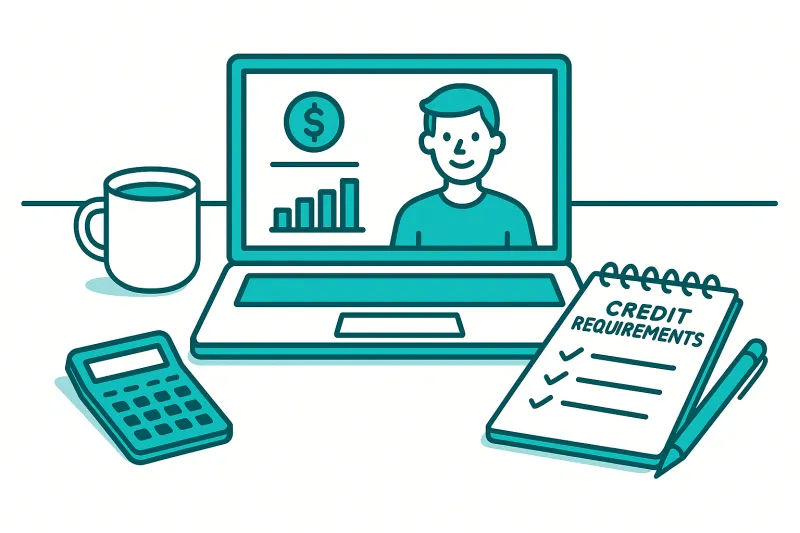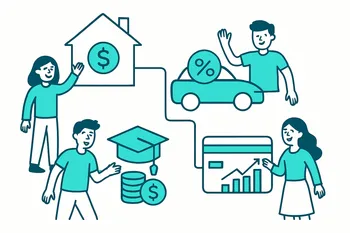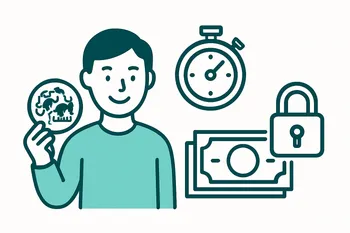How to Apply for a Line of Credit
- Personal Finance
- 04 Mins read

Understanding Lines of Credit
A line of credit is a flexible borrowing option. It allows you to withdraw funds up to a certain limit, pay interest only on what you use, and repay as needed. Think of it like a credit card but often with lower interest rates and larger amounts available.
Benefits of a Line of Credit
- Flexibility: You can withdraw money when you need it.
- Interest-Only Payments: You pay interest only on the amount you use.
- Boosts Cash Flow: Helps cover unexpected expenses or financial gaps.
- Lower Rates: Lines of credit often come with lower interest rates compared to credit cards.
Understanding these benefits is crucial, especially if you're considering taking the first steps into finance.
Pre-Application Preparation
Before applying for a line of credit, there are several steps to ensure you’re ready.
Check Your Credit Score
Your credit score is a major factor in whether you can get a line of credit and what interest rate you’ll pay. Generally, a score above 700 is viewed positively.
- Tip: Get a free credit report from agencies such as Equifax or Experian.
Assess Your Financial Needs
Are you preparing for a home renovation? Or maybe you're managing business expenses? Clearly defining your financial needs will help you choose the right type of line of credit.
Gather Necessary Documents
You’ll need several documents to apply successfully, including:
- Identification (like a driver’s license)
- Proof of income (pay stubs or tax returns)
- Employment details (job position and length)
- Current debts or existing loans
Having these documents on hand can make the application process smoother.
Choosing the Right Type of Line of Credit
Lines of credit can be either secured or unsecured.
Secured vs. Unsecured
- Secured Line of Credit: This requires collateral, such as your home or car. It often offers lower interest rates.
- Unsecured Line of Credit: This does not require collateral. The downside is that it usually comes with higher interest rates.
Consider your situation carefully. If you have collateral and can handle low-risk borrowing, a secured line may be more beneficial.
Types of Lines of Credit
- Personal Lines of Credit: Ideal for individual expenses—repairs, vacations, or emergencies.
- Home Equity Lines of Credit (HELOC): Based on the equity you have in your home. Often used for major expenses or investment opportunities.
- Business Lines of Credit: Specifically tailored for business needs, such as inventory purchases or cash flow management.
The Application Process
Now that you’re prepared, let’s walk through the application process step by step.
Step 1: Research Lenders
Find lenders who offer lines of credit suitable for your needs. Look out for:
- Interest rates
- Fees (like annual or transaction fees)
- Repayment terms
- Customer service reputation
Check reviews online or ask friends for recommendations.
Step 2: Complete the Application
Visit the lender's website or schedule an in-person meeting. Fill out the application form carefully, providing accurate information.
Step 3: Wait for Approval
After submitting your application, the lender will review your credit history and financial details. This can take anywhere from a few hours to several days, depending on the lender.
Step 4: Review the Terms
If approved, the lender will provide terms including your credit limit, interest rate, and repayment schedule.
- Key Takeaway: Make sure you understand the terms fully. Don't be afraid to ask questions!
Step 5: Accept and Access Funds
Once you understand the terms, if they’re favorable, accept the offer. You can then access your funds as needed.
Managing Your Line of Credit
Once you have your line of credit, managing it wisely is key.
Make Payments on Time
Paying your balance on time helps maintain a good credit score. Set reminders for payment dates, or consider automatic payments.
Monitor Usage
Keep track of how much you’re using and the interest accruing. If you’re borrowing frequently, it may be a sign to reassess if a line of credit is the right choice for you.
Understand the Impact of Interest Rates
Understanding how interest accumulates is vital. For example, if your line of credit has an interest rate of 10% and you borrow $5,000, after a year, you'd owe $500 in interest if no payments are made.
- Illustration: If you can repay the loan over six months, you’d pay $250 in interest (half the annual rate). Adjusting when you pay can save money.
Consider Refinancing
If you find a better rate at another lender or your financial situation changes, consider refinancing your line of credit. This can lead to lower interest costs.
Common Mistakes to Avoid
Even seasoned borrowers can trip up in this area. Avoid these common pitfalls:
Over-Borrowing
It’s easy to fall into the trap of borrowing too much. Using your line of credit like a credit card can lead to unmanageable debt. Always keep a budget in mind.
Ignoring Fees
Lenders may charge various fees. Be vigilant about understanding all potential costs before committing.
Failing to Read the Fine Print
As with any financial agreement, read the fine print. This is where lenders can hide extra terms.
When to Seek Professional Help
If you're unsure about your financial decisions, consulting a financial advisor can provide clarity. They can help tailor a strategy that meets your needs, ensuring you're making informed choices.
Conclusion
Applying for a line of credit doesn’t have to be daunting. By preparing thoroughly and understanding the process, you can navigate it with confidence. With this knowledge, you’re better equipped to manage your finances effectively. Remember, smart borrowing is about making informed choices tailored to your unique financial situation.
“In my ten years as a mortgage broker, I’ve seen countless individuals benefit from understanding their financial options.” Whether it’s a personal emergency or a business need, a line of credit can be a helpful tool when used wisely. Always stay informed, make educated decisions, and keep your financial health a priority.



